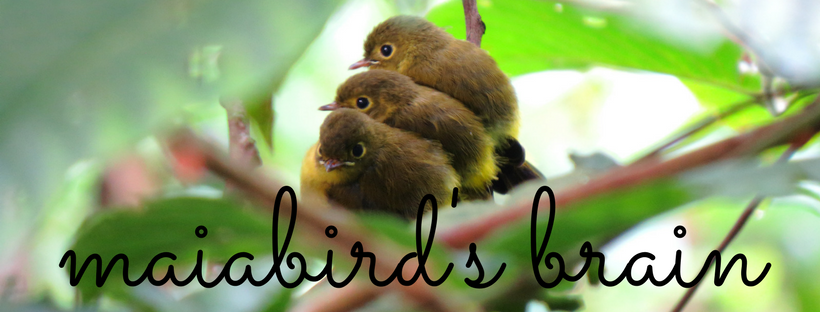That prayer was answered and I guess, even my unsaid prayer for a lifer was heard loud and clear =)
Our trio arrived earlier than the official meeting time, of course to bird a bit before the activities start. We went straight to the Puerto Rivas fishponds to check out what waders were there. Turned out, it was also the site where the group would board the motorized boats that would take us to the Balanga Wetland Park.
 |
| One of the boats waiting for the participants. |
We were able to get great views of Little Grebes, Little Egrets and Intermediate Egrets, as well as a few Marsh Sandpipers and Common Sandpipers. The other usual subjects were also present despite the overcast skies and occasional drizzle. Lots of Whiskered Terns flew overhead.
We were greeted by the City Administrator Sir Rudy and after a short while, the convoy arrived. After putting on our life jackets, we boarded the bancas and were on our way through the mangroves. We went around the newly planted mangroves and headed towards the Wetland Park. It was a pleasant ride and something new to do in Balanga. Something I want to do again as Jops wasn't able to join us on the boat =(
 |
| Headed out to open sea! |
The participants were welcomed at the park by no less than Mayor Joet Garcia. We were all treated to a scrumptious lunch at the information center accompanied by the beautiful singing of the Koro Bangkal-Magbikin, an all Aeta children's choir.
 |
| The Koro Bangkal-Magbikin. Always a pleasure hearing them sing =) |
After lunch, we proceeded with a short introduction to birdwatching and then proceeded to the view decks to spot birds. It was a slow start at first, the Whiskered Terns not generating much reaction from the participants. I had just showed the participants a Striated Heron when Mark Jason called me to look through his scope. He asked me nonchalantly if I had already seen a Great Crested Tern. I shook my head but didn't run to the scope since it was a guided trip and I felt the need to let the participants see birds first. But Mark gave me a look that made me go straight for the scope.
Then I saw them. I couldn't contain my excitement! I guess my yelp of joy and surprise got the others excited and lining up for their turn at the scope. I had to let them see the birds, there were two of them, perched on the wooden poles together with lots of Whiskered Terns.
I went to my scope and spotted them! Much larger than the Whiskered Tern, with bright yellow bills, and black heads with visible crests! Such beautiful birds! I called Jops to see them too. But when he looked through the scope... they were gone!!!
After a few minutes, Mark was able to spot more of them on a distant but still scope-able sand bar. This time Jops and the rest of the group were able to see them.
We had to turn away from the birds to continue with our guided trip. We knew we would still see them later after the activity. The group birded a bit more, spotting a handsome Collared Kingfisher in the area.
 |
| I was able to digiscope two Great Crested Terns! Gorgeous lifers! =) |
We had to turn away from the birds to continue with our guided trip. We knew we would still see them later after the activity. The group birded a bit more, spotting a handsome Collared Kingfisher in the area.
 |
| Collared Kingfisher on the roof of the view deck. |
After a yummy snack of turon and fresh buko juice, the participants went ahead to go on a city tour and to buy pasalubong from the market. Jops, Mark Jason, and I stayed behind to bird some more in the park. We spent most of our time looking at the Great Crested Terns and also IDing Common Terns which were mixed in confusingly with the other terns. We also saw Greater Sand Plovers, Kentish Plovers, and Rufous-necked Stints running around the terns.
We also checked out the mudflats but only saw Little Egrets, Whiskered Terns, and some Striated Herons. We packed up and headed home to Manila for a celebratory dinner of burgers and burritos: we didn't get rained out! Plus we got a lifer! =)









.JPG)
.JPG)
.JPG)
.JPG)






